Input interpretation

1, 2-dimethylbenzene
Chemical names and formulas
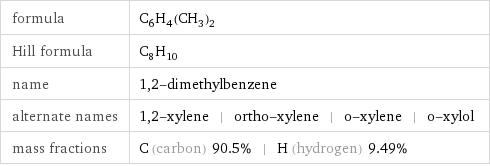
formula | C_6H_4(CH_3)_2 Hill formula | C_8H_10 name | 1, 2-dimethylbenzene alternate names | 1, 2-xylene | ortho-xylene | o-xylene | o-xylol mass fractions | C (carbon) 90.5% | H (hydrogen) 9.49%
Lewis structure
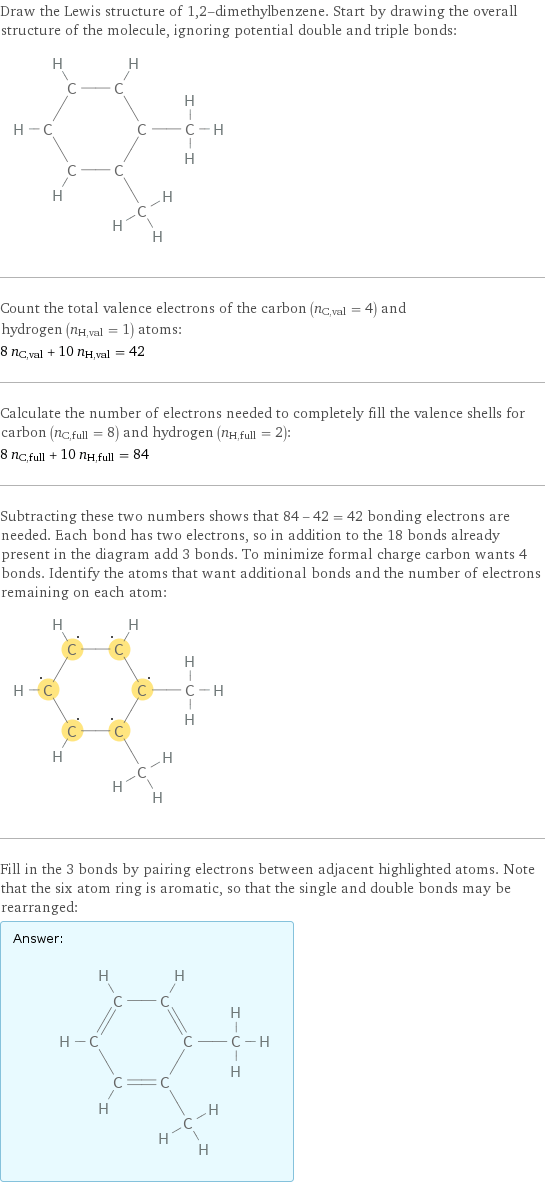
Draw the Lewis structure of 1, 2-dimethylbenzene. Start by drawing the overall structure of the molecule, ignoring potential double and triple bonds: Count the total valence electrons of the carbon (n_C, val = 4) and hydrogen (n_H, val = 1) atoms: 8 n_C, val + 10 n_H, val = 42 Calculate the number of electrons needed to completely fill the valence shells for carbon (n_C, full = 8) and hydrogen (n_H, full = 2): 8 n_C, full + 10 n_H, full = 84 Subtracting these two numbers shows that 84 - 42 = 42 bonding electrons are needed. Each bond has two electrons, so in addition to the 18 bonds already present in the diagram add 3 bonds. To minimize formal charge carbon wants 4 bonds. Identify the atoms that want additional bonds and the number of electrons remaining on each atom: Fill in the 3 bonds by pairing electrons between adjacent highlighted atoms. Note that the six atom ring is aromatic, so that the single and double bonds may be rearranged: Answer: | |
3D structure
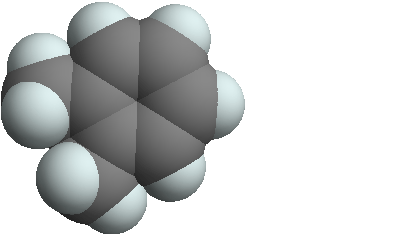
3D structure
Basic properties
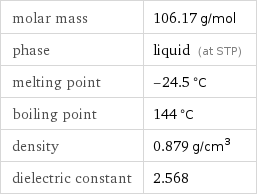
molar mass | 106.17 g/mol phase | liquid (at STP) melting point | -24.5 °C boiling point | 144 °C density | 0.879 g/cm^3 dielectric constant | 2.568
Liquid properties (at STP)

density | 0.879 g/cm^3 vapor pressure | 76 mmHg dynamic viscosity | 7.6×10^-4 Pa s (at 25 °C) surface tension | 0.02976 N/m refractive index | 1.505 UV cutoff wavelength | 290 nm
Units

Thermodynamic properties
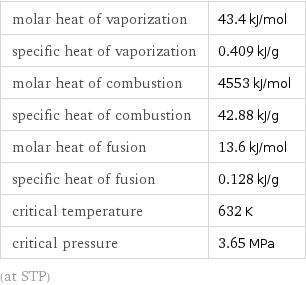
molar heat of vaporization | 43.4 kJ/mol specific heat of vaporization | 0.409 kJ/g molar heat of combustion | 4553 kJ/mol specific heat of combustion | 42.88 kJ/g molar heat of fusion | 13.6 kJ/mol specific heat of fusion | 0.128 kJ/g critical temperature | 632 K critical pressure | 3.65 MPa (at STP)
Basic drug properties

approval status | experimental | small molecule
Hydrophobicity and permeability properties

predicted LogP hydrophobicity | 3.16 predicted LogS | -2.71
Chemical identifiers
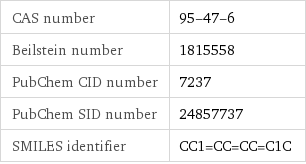
CAS number | 95-47-6 Beilstein number | 1815558 PubChem CID number | 7237 PubChem SID number | 24857737 SMILES identifier | CC1=CC=CC=C1C
NFPA label

NFPA label
Safety properties
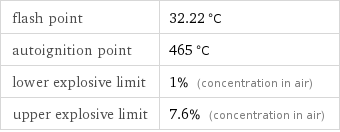
flash point | 32.22 °C autoignition point | 465 °C lower explosive limit | 1% (concentration in air) upper explosive limit | 7.6% (concentration in air)